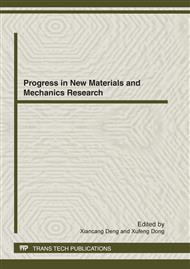p.292
p.297
p.302
p.306
p.312
p.316
p.320
p.325
p.330
The Red-Emitting Phosphor of Sm3+-Doped Y2Si4N6C
Abstract:
A new red-emitting Rare-earth silicon carbonitrides phosphor, Y2Si4N6C, was prepared by a carbothermal reduction and nitridation method. X-ray powder diffraction (XRD), the photoluminescence excitation and emission spectra, temperature dependent was measured. The emission spectrum obtained by excitation into 410 nm contains exclusively the characteristic emission of Sm3+ at 568, 607 and 654 nm which correspond to the transitions from 4G5/2 to 6H5/2, 6H7/2, and 6H9/2 of Sm3+, respectively. The strongest one is located at 606 nm due to 4G5/2 to 6H7/2 transition of Sm3+ .
Info:
Periodical:
Pages:
312-315
Citation:
Online since:
April 2012
Authors:
Price:
Сopyright:
© 2012 Trans Tech Publications Ltd. All Rights Reserved
Share:
Citation:


